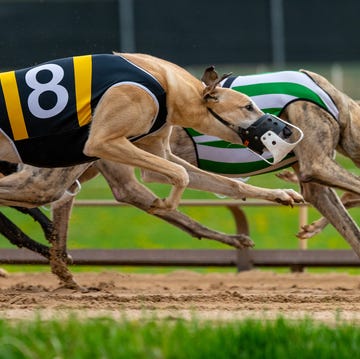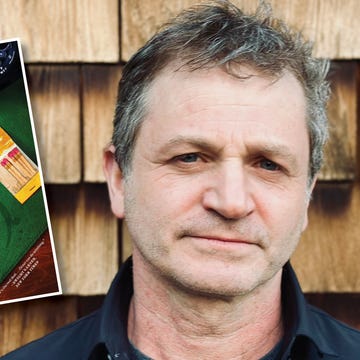Launched in Los Angeles in 1994 as a DIY zine focused on Asian pop culture, Giant Robot exploded into the mainstream in the late ’90s and 2000s. What was once a handmade, small-batch keepsake, the zine reached over 60,000 readers at its peak and included a restaurant, galleries, storefronts, and events in L.A., New York, and San Francisco. Three decades later, founder Eric Nakamura has released Giant Robot: Thirty Years of Defining Asian American Pop Culture, a new collection that features the best of the magazine’s 68-issue run and includes new writing and never-before-seen photographs. Nakamura joins Alta senior editor Matt Haber for a discussion on the zine’s origins and impact, the evolution of Asian and Asian American pop culture in recent decades, and a peek at what lies ahead.
About the guest:
Eric Nakamura founded Giant Robot as a photocopied and stapled zine in 1994 and grew the publication until late 2010. Giant Robot magazine reached a multiracial audience interested in Asian popular culture and became known as the premier magazine in the field. Nakamura built on the success of Giant Robot with stores and galleries in Los Angeles, New York, and San Francisco and has curated over 300 exhibitions. Currently, Nakamura works in and owns the Giant Robot store and GR2 Gallery in Los Angeles, which continues to offer pop culture goods and hold art exhibitions.
Nakamura holds a degree in East Asian Studies from UCLA.
About the book:
Los Angeles, 1994. Two Asian American punk rockers staple together the zine of their dreams featuring sumo, Hong Kong cinema, and Osamu Tezuka. From the very margins of the DIY press and alternative culture, Giant Robot burst into the mainstream with over 60,000 copies in circulation annually at its peak. Giant Robot even popped right off the page, setting up a restaurant, a gallery, and storefronts in L.A., as well as galleries and stores in New York and San Francisco. As its influence grew in the ’90s and ’00s, Giant Robot was eventually invited to the White House by Barack Obama, to speak at Harvard University’s Graduate School of Design, and to curate the GR Biennale at the Japanese American National Museum.
Home to a host of unapologetically authentic perspectives bridging the bicultural gap between Asian and Asian American pop culture, GR had the audacity to print such topics side-by-side and became a touchstone for generations of artists, musicians, creators, and collectors of all kinds in a pre–social media era. Nowhere else were pieces on civil rights activists running next to articles on skateboarding and sriracha. Toy collectors, cartoonists, and street-style pioneers got as many column inches as Michelle Yeoh, Karen O, James Jean, and Haruki Murakami.
Giant Robot: Thirty Years of Defining Asian American Pop Culture features the best of the magazine’s 68-issue run alongside never-before-seen photographs, supplementary writing by long-term contributing journalist Claudine Ko, and tributes from now-famous fans who’ve been around since day one. Margaret Cho, Daniel Wu, and Randall Park celebrate Giant Robot’s enduring legacy alongside pioneering pro-skateboarder Peggy Oki, contemporary art giant Takashi Murakami, culinary darling Natasha Pickowicz, and critically acclaimed essayist Jia Tolentino.
Here are some notable quotes from today’s event:
- On the start of Giant Robot: “It started in ’94 as a zine, literally pasted up: glue sticks, photocopies, scissors, and X-Acto blades. Putting it all together so we could put it on a photocopier.”
- On the drive behind Giant Robot: “I think it’s just being a curious person and being interested in a lot of things that were just not covered in the media. That’s kind of where Giant Robot gets born—all these things that I was into were just not covered.”
- On serious subject matter in Giant Robot: “It felt natural. I wasn’t trying to create some kind of momentous occasion—it was just doing something we wanted to do. Sometimes you think there’s a lot of thought going into it. And no, probably not, but at the same time, there was something within us that pushed us to do it. I might not have known the context at the time, but looking back, I see exactly why I wanted to do it, or why I wanted to go that direction, or why I took that picture. I understand all the context later. But while you’re doing it, you’re just in the moment.”
- On regrets in Giant Robot: “Some of the writing’s very heavy-handed, very confident, and very brash. Some of it makes me think, Oh, that’s kind of mean to this person for almost no reason. But that was in my youth. I apologize now, and I think that’s one thing you probably don’t understand as a youngster if you’re writing. The things that you say, especially if it’s going into a written, print type of situation, might be ephemeral; it might be there for a long time.”
Check out these links to some of the topics brought up this week.
- Read “Mr. Nakamura’s Opus,” by George Chen.
- Buy Giant Robot: Thirty Years of Defining Asian American Pop Culture.
- Check out a PBS interview with Nakamura.
- Shop at Nakamura’s Giant Robot store in Los Angeles.
- Visit Nakamura’s GR2 Gallery.
- Listen to Nakamura’s podcast with artist Luke Chueh, Robot and the Bear.•











